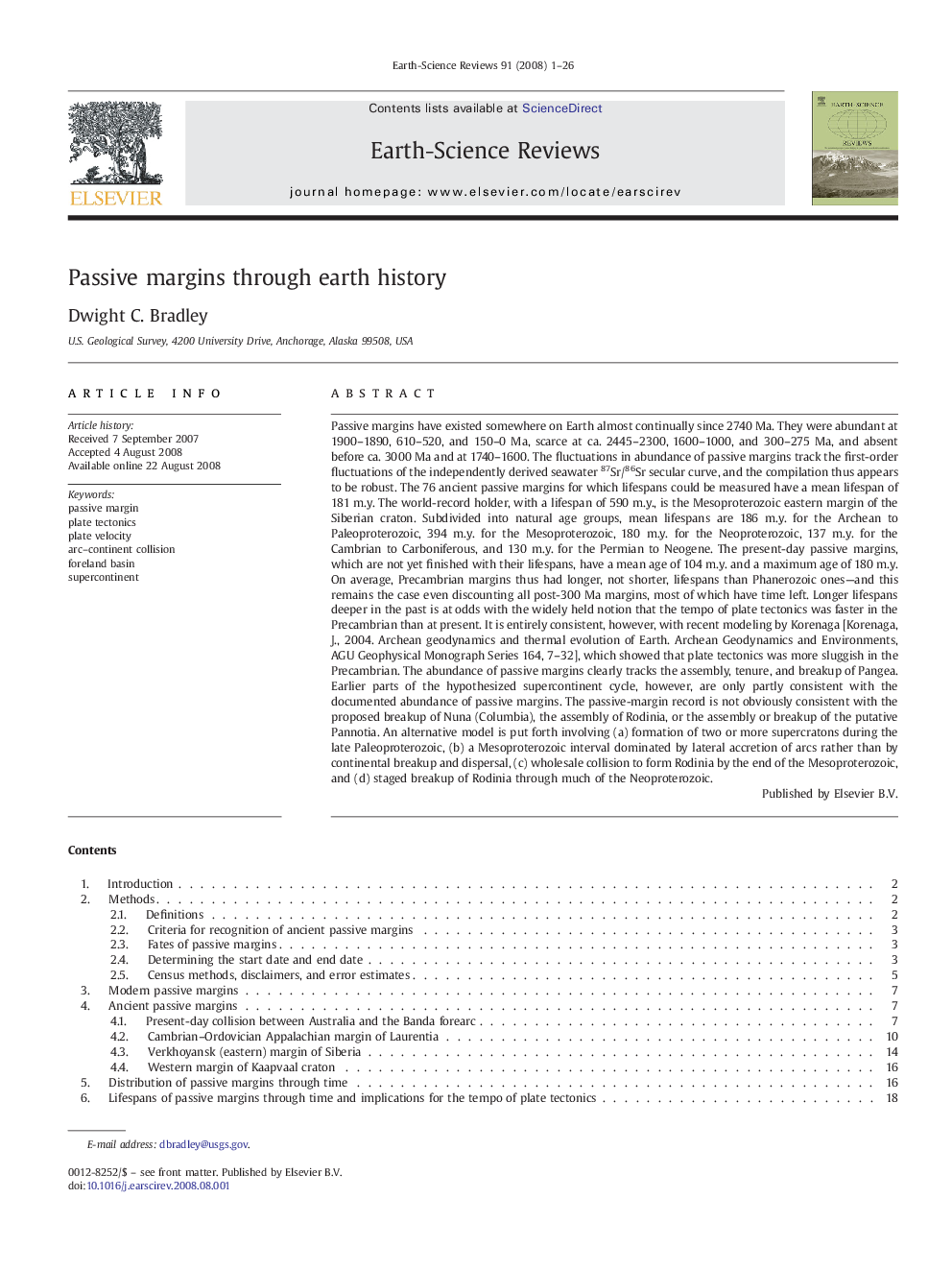| کد مقاله | کد نشریه | سال انتشار | مقاله انگلیسی | نسخه تمام متن |
|---|---|---|---|---|
| 4726269 | 1640028 | 2008 | 26 صفحه PDF | دانلود رایگان |

Passive margins have existed somewhere on Earth almost continually since 2740 Ma. They were abundant at 1900–1890, 610–520, and 150–0 Ma, scarce at ca. 2445–2300, 1600–1000, and 300–275 Ma, and absent before ca. 3000 Ma and at 1740–1600. The fluctuations in abundance of passive margins track the first-order fluctuations of the independently derived seawater 87Sr/86Sr secular curve, and the compilation thus appears to be robust. The 76 ancient passive margins for which lifespans could be measured have a mean lifespan of 181 m.y. The world-record holder, with a lifespan of 590 m.y., is the Mesoproterozoic eastern margin of the Siberian craton. Subdivided into natural age groups, mean lifespans are 186 m.y. for the Archean to Paleoproterozoic, 394 m.y. for the Mesoproterozoic, 180 m.y. for the Neoproterozoic, 137 m.y. for the Cambrian to Carboniferous, and 130 m.y. for the Permian to Neogene. The present-day passive margins, which are not yet finished with their lifespans, have a mean age of 104 m.y. and a maximum age of 180 m.y. On average, Precambrian margins thus had longer, not shorter, lifespans than Phanerozoic ones—and this remains the case even discounting all post-300 Ma margins, most of which have time left. Longer lifespans deeper in the past is at odds with the widely held notion that the tempo of plate tectonics was faster in the Precambrian than at present. It is entirely consistent, however, with recent modeling by Korenaga [Korenaga, J., 2004. Archean geodynamics and thermal evolution of Earth. Archean Geodynamics and Environments, AGU Geophysical Monograph Series 164, 7–32], which showed that plate tectonics was more sluggish in the Precambrian. The abundance of passive margins clearly tracks the assembly, tenure, and breakup of Pangea. Earlier parts of the hypothesized supercontinent cycle, however, are only partly consistent with the documented abundance of passive margins. The passive-margin record is not obviously consistent with the proposed breakup of Nuna (Columbia), the assembly of Rodinia, or the assembly or breakup of the putative Pannotia. An alternative model is put forth involving (a) formation of two or more supercratons during the late Paleoproterozoic, (b) a Mesoproterozoic interval dominated by lateral accretion of arcs rather than by continental breakup and dispersal, (c) wholesale collision to form Rodinia by the end of the Mesoproterozoic, and (d) staged breakup of Rodinia through much of the Neoproterozoic.
Journal: Earth-Science Reviews - Volume 91, Issues 1–4, December 2008, Pages 1–26